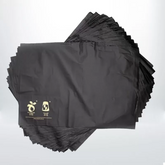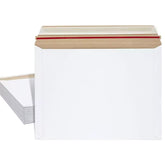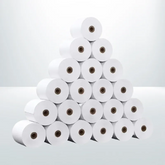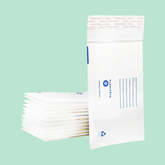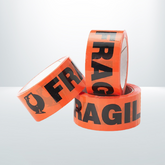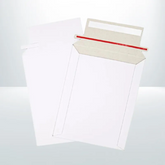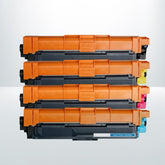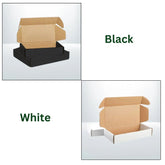Understanding the strength of a shipping box would mean safe delivery of goods. The strength can be attributed to the grade in cardboard, its construction, and the type of flute used. All of which help in bearing pressure and absorbing shocks during transit. Additional factors such as reinforced edges and moisture levels can also affect this strength.
It is equally essential to know that the proportion of dimensions matters; a balance should be found between length and width to ensure stability. This balance is well ensured in the tests such as Edge Crush Test (ECT) to measure a box's durability.
Explaining Cardboard Box Strength and Its Importance
The importance of cardboard strength is often taken for granted, but it is indeed a critical subject of discussion.
Cardboard strength is its capability of withstanding loads or pressures until failure or damage. Many factors contribute to this: cardboard thickness, type of glue used, and cardboard construction.
Another one that most people fail to appreciate is that cardboard box strength entails much more than that, and this involves how safe it will be for the products inside it. Basically, any cardboard box that is thick and strong will restrict the impact and shock, thereby preventing any damage to the items kept inside.
Not only do the inherent properties of a cardboard box attribute strength to it, but so do its ability to endure stresses put into action.
Different Grades of Cardboard Boxes and Their Strength
Now that we have highlighted the strength capacity of boxes, let's see what grades of cardboard boxes are and their possible strengths.
In classifying them according to grades, these cardboard boxes are entirely composed of single wall, double wall, or triple wall.
Single wall boxes: An example of which consists of a single layer of fluting sandwiched between two liner paper sheets, it is better for lighter items. It has a good bursting strength with an ECT value that ranges from 23 to 44 lbs/inch.
Double wall boxes: These have two flutes arranged between a liner. Because of this, they carry stacking strength, stacking rigidity, and are thus preferable for the heavier loads. Their ECT values vary from 42 to 82 lbs/inch.
Triple wall boxes: These enable the construction of boxes with three layers of fluting sheets and four sheets of liner, offering the utmost protection and strength. They are perfect for heavy or fragile items, with ECT values up to as high as 110 lbs/inch.
For this reason, the knowledge of these grades is of utmost importance for the convenience of considering the box most suited to your shipping needs.
It is equally important to keep in mind, as you already did, that it is not just the size of the box you have to consider but also the strength.
Factors That Affect the Strength of Cardboard Boxes
Several factors influence the strength and durability of cardboard boxes:
Grade of the Cardboard:
Thicker cardboards like double-wall or triple-wall papers are preferred over single-wall cardboard. These have much better strength and durability, and the kind of paper used also largely determines this factor.
Box Construction is Critical:
The sturdiness of the cardboard material determines the resistance against breakage in the box. The corrugated cardboard has one extra internal fluted sheet for added strength and stiffness. The flute used B, C, E, or F determines the strength of the box as well.
Box Edges: The presence of reinforced edges in most carton boxes generally increases the strength of the box while decreasing the chances of incurring buckling deformation under load.
Moisture Level: The characteristics of cardboard entail moisture level, which adhered to high humidity or liquid quite often will reduce the strength of a cardboard box by as much as 50%. Hence, it is essential to store and utilize the boxes in low moisture levels.
How Box Dimensions Impact Strength
No one will deny that the strength of a box is much influenced by its dimension. Thus, larger boxes seem to win over smaller ones. There is a sort of maximum strength that can be obtained from a box compared to keeping increasing the dimension either in length, width and height.
First, one aspect refers to this aspect, namely the rectangular dimensions ratio that affects box stacking strength. The load-bearing compression without failure of a box is in direct proportion to box dimension ratio being considered above. Whenever a box is designed in such a way that the length equals width, we call it the cube, and the advantage is that such a cube has the advantage of greater stacking strength. Because the load gets distributed more evenly across it.
Furthermore, if there is to be any dimension in which critical measurements exist, it would be the height of the box. It is noted that boxes of greater height usually have less stacking strength. This is mainly due to the increase of vertical distance from the top load to the base of the box which causes the box to buckle and collapse.
It might be difficult to balance the dimension of such a box with its strength-the mere knowledge of the existence of such a relationship will enable understanding of the reasons for these other decisions made in packaging.
What Is the Edge Crush Test (ECT) and Why Is It Important?
Among packaging design tests, Edge Crush Test (also referred to as ECT test) has paramount significance. It is the test we conduct to determine the cross-direction crushing strength of a sample of corrugated board. ECT provides an estimate of the resistance the box has to crushing forces or stacking strength.
The ECT test requires taking a small piece of 125 mm square corrugated board. That piece is put between two platens of a compression machine. The specimen is loaded until failure; that is, until the point at which it is unable to carry any more weight. The ECT rating is given as lb/in.
Why is ECT of utmost importance? Because it allows us to know just how well that box will be holding up when under storage and while in transit. It is crucial because it defines how much weight a box will sustain before collapse.
In short, ECT helps us assure that your product reaches its destination in one piece.









